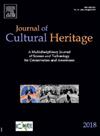PyPotteryInk: One-step diffusion model for sketch to publication-ready archaeological drawings
IF 3.3
2区 综合性期刊
0 ARCHAEOLOGY
引用次数: 0
Abstract
Archaeological pottery documentation traditionally requires a time-consuming manual process of converting pencil sketches into publication-ready inked drawings. This paper presents PyPotteryInk, an open-source automated pipeline that transforms archaeological pottery sketches into standardised publication-ready drawings using a one-step diffusion model. Built on a modified img2img-turbo architecture, the system processes drawings in a single forward pass while preserving crucial morphological details and maintaining archaeologic documentation standards and analytical value. The model employs an efficient patch-based approach with dynamic overlap, enabling high-resolution output regardless of input drawing size. The effectiveness of the approach is demonstrated on a dataset of Italian protohistoric pottery drawings, where it successfully captures both fine details like decorative patterns and structural elements like vessel profiles or handling elements. Expert evaluation confirms that the generated drawings meet publication standards while significantly reducing processing time from hours to seconds per drawing. The model can be fine-tuned to adapt to different archaeological contexts with minimal training data, making it versatile across various pottery documentation styles. The pre-trained models, the Python library and comprehensive documentation are provided to facilitate adoption within the archaeological research community.

PyPotteryInk:一步扩散模型草图出版准备考古图纸
传统上,考古陶器文献需要一个耗时的手工过程,将铅笔草图转换为可供出版的墨水图纸。本文介绍了PyPotteryInk,这是一个开源的自动化管道,可以使用一步扩散模型将考古陶器草图转换为标准化的出版图纸。该系统建立在一个改进的img2mg -turbo架构上,在保存关键形态学细节和保持考古文献标准和分析价值的同时,在一个单一的向前通道中处理图纸。该模型采用了一种高效的基于补丁的动态重叠方法,无论输入图形大小如何,都能实现高分辨率输出。该方法的有效性在意大利史前陶器图纸的数据集上得到了证明,它成功地捕获了装饰图案等精细细节和容器轮廓或处理元素等结构元素。专家评估证实,生成的图纸符合出版标准,同时大大减少了处理时间,从几小时到几秒钟。该模型可以微调,以适应不同的考古背景与最少的训练数据,使其在各种陶器文献风格的通用。提供了预训练模型、Python库和全面的文档,以促进考古研究社区的采用。
本文章由计算机程序翻译,如有差异,请以英文原文为准。
求助全文
约1分钟内获得全文
求助全文
来源期刊

Journal of Cultural Heritage
综合性期刊-材料科学:综合
CiteScore
6.80
自引率
9.70%
发文量
166
审稿时长
52 days
期刊介绍:
The Journal of Cultural Heritage publishes original papers which comprise previously unpublished data and present innovative methods concerning all aspects of science and technology of cultural heritage as well as interpretation and theoretical issues related to preservation.
 求助内容:
求助内容: 应助结果提醒方式:
应助结果提醒方式:


